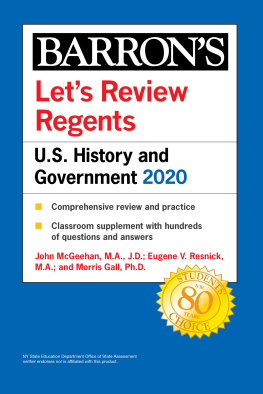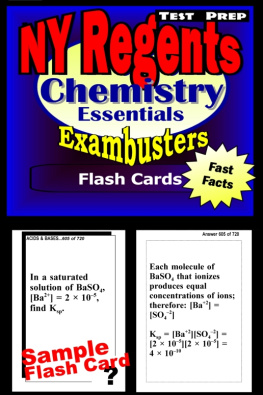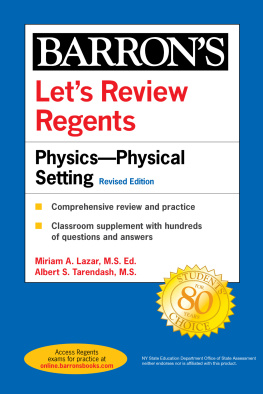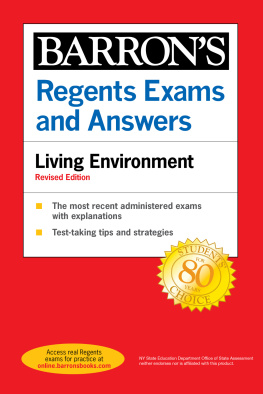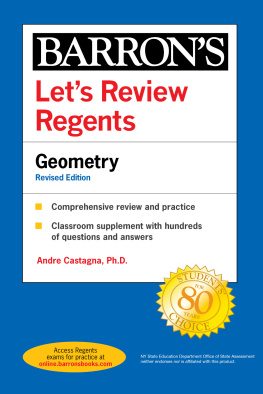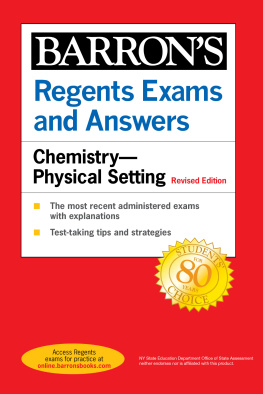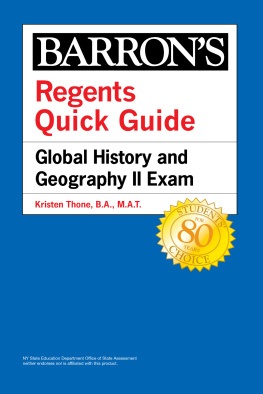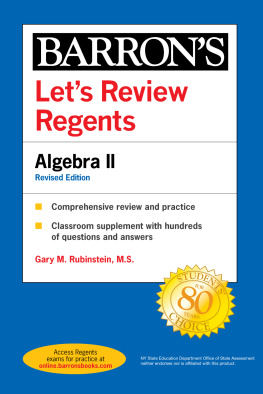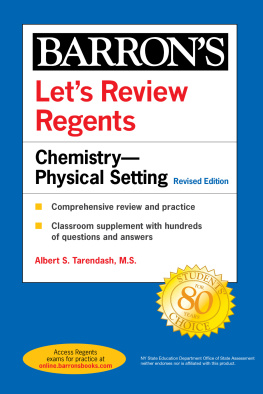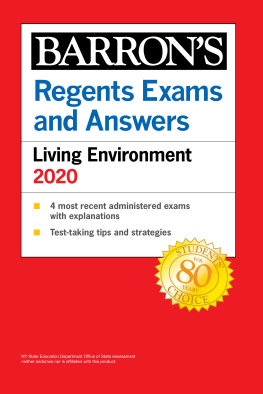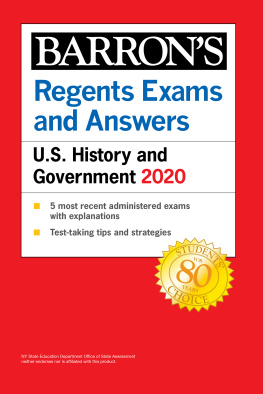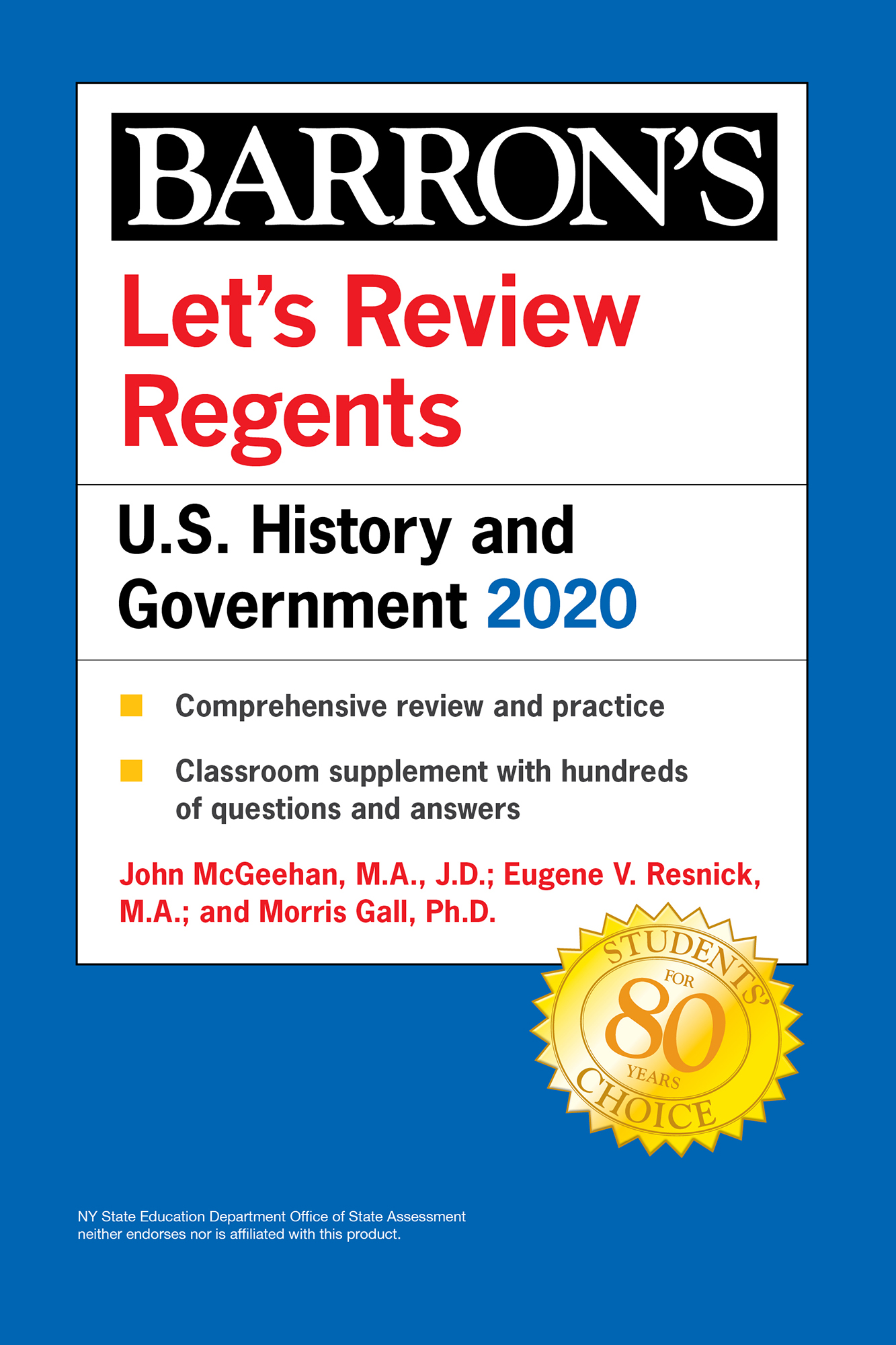Copyright 2018, 2017, 2016, 2015, 2014, 2013, 2012, 2011, 2010, 2009, 2008, 2007, 2006, 2005, 2004, 2003, 2002, 2001, 1995, 1990 by Kaplan, Inc., d/b/a Barrons Educational Series
All rights reserved under International and Pan-American Copyright Conventions. By payment of the required fees, you have been granted the non-exclusive, non-transferable right to access and read the text of this eBook on screen. No part of this text may be reproduced, transmitted, downloaded, decompiled, reverse engineered, or stored in or introduced into any information storage and retrieval system, in any form or by any means, whether electronic or mechanical, now known or hereinafter invented, without the express written permission of the publisher.
Published by Kaplan, Inc., d/b/a Barrons Educational Series
750 Third Avenue
New York, NY 10017
www.barronseduc.com
ISBN: 978-1-5062-7089-0
10 9 8 7 6 5 4 3 2 1
Acknowledgments
Copyright William H. Sadlier, Inc. with permission of publisher. All rights reserved.
Reprinted from Gavel to Gavel, A Guide To The Televised Proceedings of Congress with permission from the Benton Foundation, Washington, D.C.
Mary Beth Norton, David M. Katzman, Paul D. Escott, Howard P. Chudacoff, Thomas G. Patterson, William M. Tuttle, Jr. A People And A Nation, Fourth Edition 1994 by Houghton Mifflin Company. Reprinted with permission.
From ETHNIC AMERICANS: A HISTORY OF IMMIGRATION AND ASSIMILATION by Leonard Dinnerstein and David Reimers. Copyright 1975. Reprinted with permission.
The American Empire from THE AMERICAN PAST: A SURVEY OF AMERICAN HISTORY by Joseph Conlin, Copyright 1984 by Harcourt Brace Jovanovich, Inc., reprinted by permission of the publisher.
Preface
This Sixth Edition is designed as a review of the New York State Regents Course in United States History and Government. The material follows the last major revision in the syllabus in Regents Social Studies: United States History and Government, which is used throughout New York State as the basis of a course of study in history on the secondary level. The curriculum incorporates the following Thirteen Enduring Constitutional Issues:
- National Powerlimits and potential
- Federalism: the balance between nation and state
- The Judiciary: interpreter of the Constitution or shaper of public policy
- Civil Liberties: the balance between government and the individual
- Criminal Penaltiesrights of the accused and protection of the community
- Equality: its definition as a Constitutional value
- The Rights of Women under the Constitution
- The Rights of Ethnic and Racial Groups under the Constitution
- Presidential Power in Wartime and in Foreign Affairs
- The Separation of Powers and the Capacity to Govern
- Avenues of Representation
- Property Rights and Economic Policy
- Constitutional Change and Flexibility
The following concepts and themes in United States history are also emphasized in the curriculum:
- Change
- Citizenship
- Civic Values
- Constitutional Principles
- Culture and Intellectual Life
- Diversity
- Economic Systems
- Environment
- Factors of Production
- Foreign Policy
- Government
- Human Systems
- Immigration and Migration
- Individuals, Groups, Institutions
- Interdependence
- Physical Systems
- Places and Regions
- Reform Movements
- Presidential Decisions and Actions
- Science and Technology
Although the material has been prepared to meet the needs of New York State students, this book can help students in any secondary-level U.S. History and Government course.
What Are the Special Features of This Book?
The arrangement of topical information parallels, for the most part, that of the New York State Regents syllabus in United States History and Government. Each of the seven major units begins with a brief explanation of the key ideas in the unit followed by a list of connections emphasized by the state syllabus. Each unit is broken down into several chapters that are consistent with the major divisions in the United States History and Government syllabus.
The format of the Regents Examination is as follows:
- 50 Multiple-Choice Questions 50 Minutes 55% of grade
- One Thematic Essay 45 Minutes 15% of grade
- One Document-Based Question 60 Minutes 30% of grade
At the end of each chapter are multiple-choice questions and essays that coincide with the style of questions in Parts I, II, and III of the New York State Regents Examination. Each unit ends with thematic and document-based essays. In some cases, past Regents Examination questions have been included. The questions range from recall-drill to complex stimulus-based questions.
Stimulus-Based Questions
In future Regents Exams, there will be greater use of stimulus-based multiple-choice questions. This type of question asks you to respond to stimulus material: a primary or secondary source, images, charts, graphs, maps, etc. It is important that you note the date and source of the stimuli (chart, map, quote, political cartoon, etc.). You must take a moment to read the stimuli and be comfortable with the information presented. The multiple-choice question will test your ability to understand the stimulus material and apply that understanding to the historical issue at hand. The following is an example of a stimulus-based multiple-choice question.
The changes shown in the graph below support the recent concerns of Americans about the
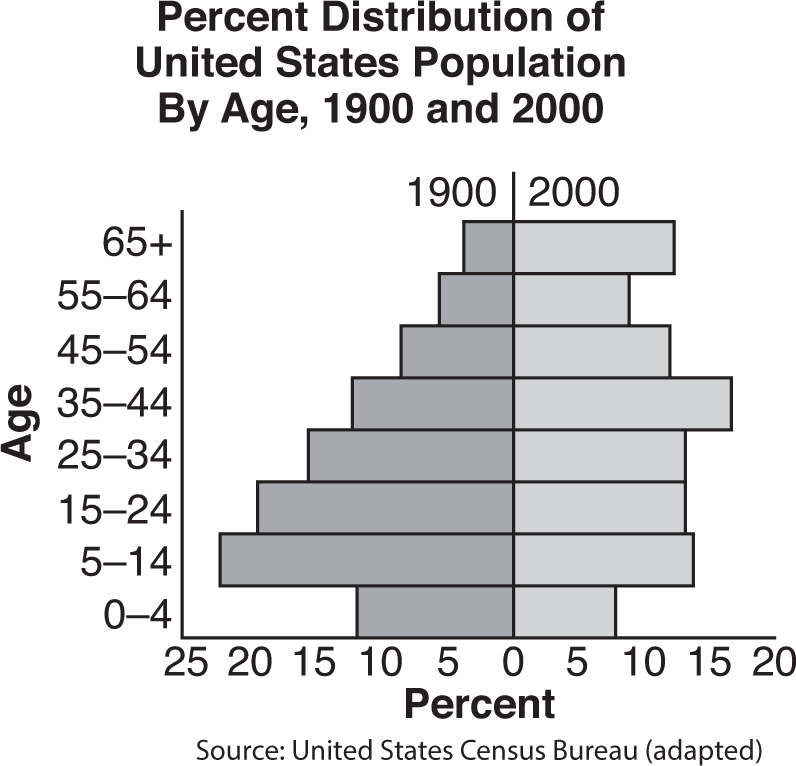
- future of Social Security and Medicare.
- return to an agrarian society.
- surplus of health care workers.
- shortage of schools and colleges.
In this question, you should take note of the dates presented (1900 and 2000), the source (United States Census Bureau, primary source), and the data provided in each axis (age and percent). Once you understand the information presented, you should be able to conclude that Social Security and Medicare are age-based entitlements and, therefore, the best answer would be choice A.
Because of the intimidating amount and complexity of the information presented in a course on United States History and Government, you should find the Chronology of Events in American History at the end of the book helpful. It shows the cause and effect pattern of our nations story. The Sixth Edition also contains a Glossary of Terms, short biographies of Notable Americans, a list of Historical Documents, and a collection of significant Quotations, organized chronologically. These materials are intended both as reference aids and guides for study and review. Key United States Supreme Court decisions appear at the beginning of the book.
Complementing the text are graphs, political cartoons, maps, and charts to help portray necessary information, express points of view, and allow you to apply interpretive skills.
Historiography
Historians aim to reconstruct a record of human events into what we refer to as history. You must understand that history does not present us with absolute answers, but often requires us to make judgments based on evidence that may require thoughtful interpretation. Historiography is actually the history of history. You must be able to distinguish between primary and secondary sources. As you take on any course in history, you must learn to think like historians and ask the following questions as you read historical accounts:

